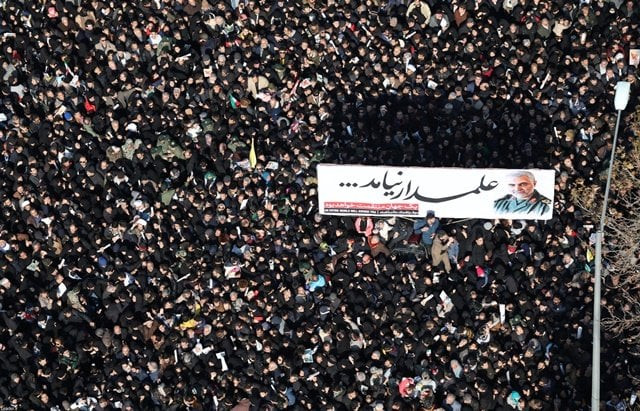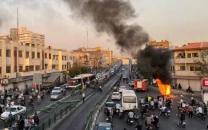Iran considers retaliation options as it buries slain commander
Secretary of the Supreme National Security Council says 13 'revenge scenarios' were being considered

Iranian people gather during a funeral for Iranian Major-General Qassem Soleimani, head of the elite Quds Force, and Iraqi commander Abu Mahdi al-Muhandis, who were killed in an air strike at Baghdad airport. Official Khamenei website/Handout via REUTERS
In Washington, the US defense secretary denied reports the US military was preparing to withdraw from Iraq, where Tehran has vied with Washington for influence over nearly two decades of war and unrest.
The killing of General Qassem Soleimani, who was responsible for building up Tehran’s network of proxy forces across the Middle East, has prompted mass mourning in Iran.
The US and Iranian warnings of new strikes and retaliation have also stoked concerns about a broader Middle East conflict and led to calls in the US Congress for legislation to stop US President Donald Trump going to war with Iran.
Iran's leader Khamenei leads huge crowds at Qassem Soleimani's funeral
“We will take revenge, a hard and definitive revenge,” the head of Iran’s Revolutionary Guards, General Hossein Salami, told tens of thousands of mourners in Soleimani’s hometown of Kerman.
Many chanted “Death to America” and waved the Iranian flag.
Soleimani’s body has been taken through Iraqi and Iranian cities since Friday’s strike, with huge crowds of mourners filling the streets.
Iran’s Supreme Leader Ayatollah Ali Khamenei and military commanders have said Iranian retaliation for the US action on Friday would match the scale of Soleimani’s killing but that it would be at a time and place of Tehran’s choosing.
Ali Shamkhani, secretary of the Supreme National Security Council, said 13 “revenge scenarios” were being considered, Fars news agency reported. Even the weakest option would prove “a historic nightmare for the Americans,” he said.
Iran, whose southern coast stretches along a Gulf oil shipping route that includes the narrow Stait of Hormuz, has allied forces across the Middle East through which it could act. Representatives from those forces, including the Palestinian group Hamas and Lebanon’s Hezbollah movement, attended the funeral.
Despite its strident rhetoric, analysts say Iran will want to avoid any conventional conflict with the United States but asymmetric strikes, such as sabotage or other more limited military actions, are more likely.
Trump has promised strikes on 52 Iranian targets, including cultural sites, if Iran retaliates, although US officials sought to downplay his reference to cultural targets.
‘Never threaten the Iranian nation,’ Iran president tells Trump
Reuters and other media reported on Monday that the US military had sent a letter to Iraqi officials informing them that US troops would be repositioned in preparation to leave.
“In order to conduct this test, Coalition Forces are required to take certain measures to ensure that the movement out of Iraq is conducted in a safe and efficient manner,” it said.
US Defense Secretary Mark Esper said there had been no decision whatsoever to leave Iraq.
“I don’t know what that letter is,” he said.
US Army General Mark Milley, chairman of the Joint Chiefs of Staff, said the letter was a “poorly worded” draft document meant only to underscore increased movement by US forces.


















COMMENTS
Comments are moderated and generally will be posted if they are on-topic and not abusive.
For more information, please see our Comments FAQ